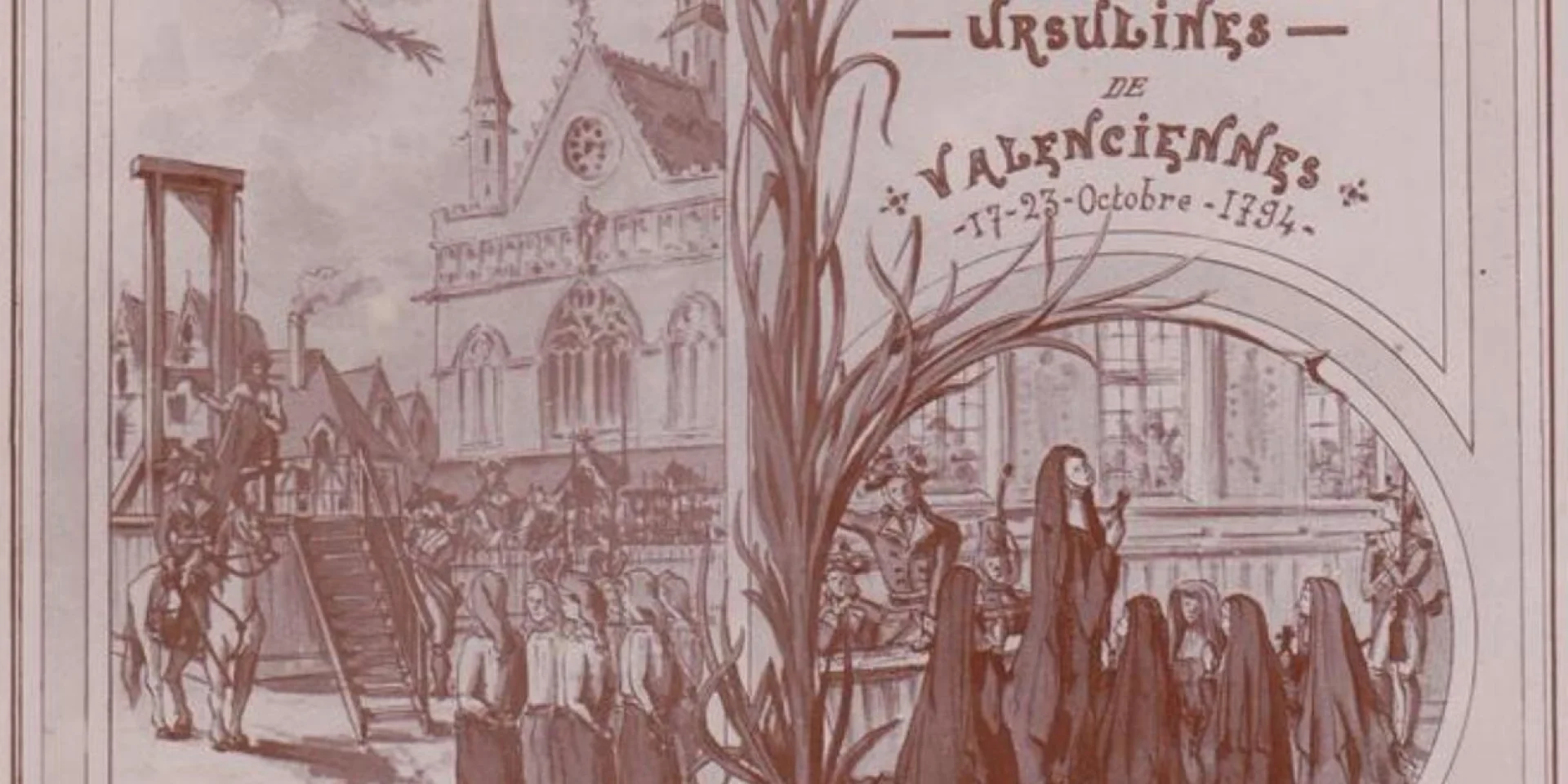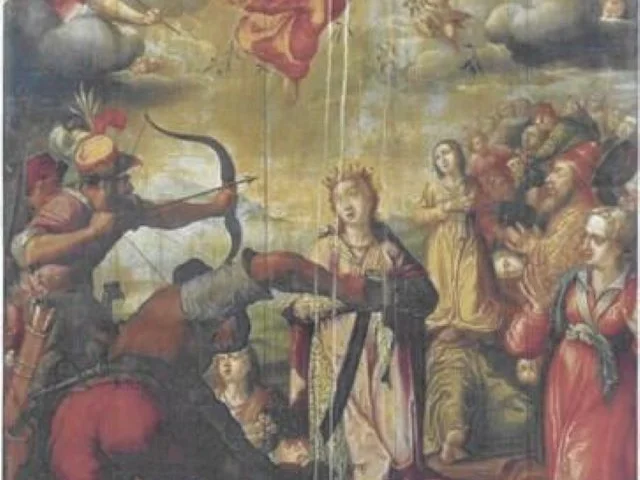The Martyrdom of Saint Ursula and Her Companions
Detail of an oil on wood representing “The Martyrdom of Saint Ursula and Her Companions”, painting dating from the 17th century – Musée de Valenciennes. Pieter DE WITTE (after) – Bruges, 1548 – Munich, 1628
The scene depicted is taken from Jacques De Voragine’s Golden Legend: Ursula, a 3rd-century Breton princess, is said to have made a 3-year pilgrimage to Saint Cyriacus of ROME to escape her suitor. On her return, captured by the Huns, she refused to marry their leader to avoid abjuring her faith. She and her followers, eleven thousand virgins, were massacred and riddled with arrows by the Huns besieging COLOGNE.
Painted in the second third of the 17th century, the Valenciennes work is one of a series of early copies made by the Flemish Mannerist Pieter de Witte, who in turn copied the engraving by Jan Sadeler (born in Brussels in 1550). This version of the martyrdom certainly comes from a Flemish painter to whom the work was commissioned.
The painting may have been commissioned by the Ursuline Convent in Valenciennes, or it may have come from a Valenciennes church. Indeed, many churches worshipped the martyred saint and her eleven thousand virgins, whose relics were very numerous due to the number of martyrs.
This painting has a very strong resonance in the Valenciennes region, given the importance of the Ursuline congregation since the foundation of the convent in 1654.
This convent would be marked 140 years later by the beheading of eleven of these sisters during the French Revolution (for having committed the crime of emigration). They were beatified by Pope Benedict XV.
The work is in a fair state of preservation, having been badly damaged in the fire at the Ursuline convent in SAINT SAULVE in 1973.
This painting was purchased in a public sale by the VALENCIENNES Fine Arts Museum in 2018. It was restored from April to September 2019 for presentation at the museum in October 2019.


